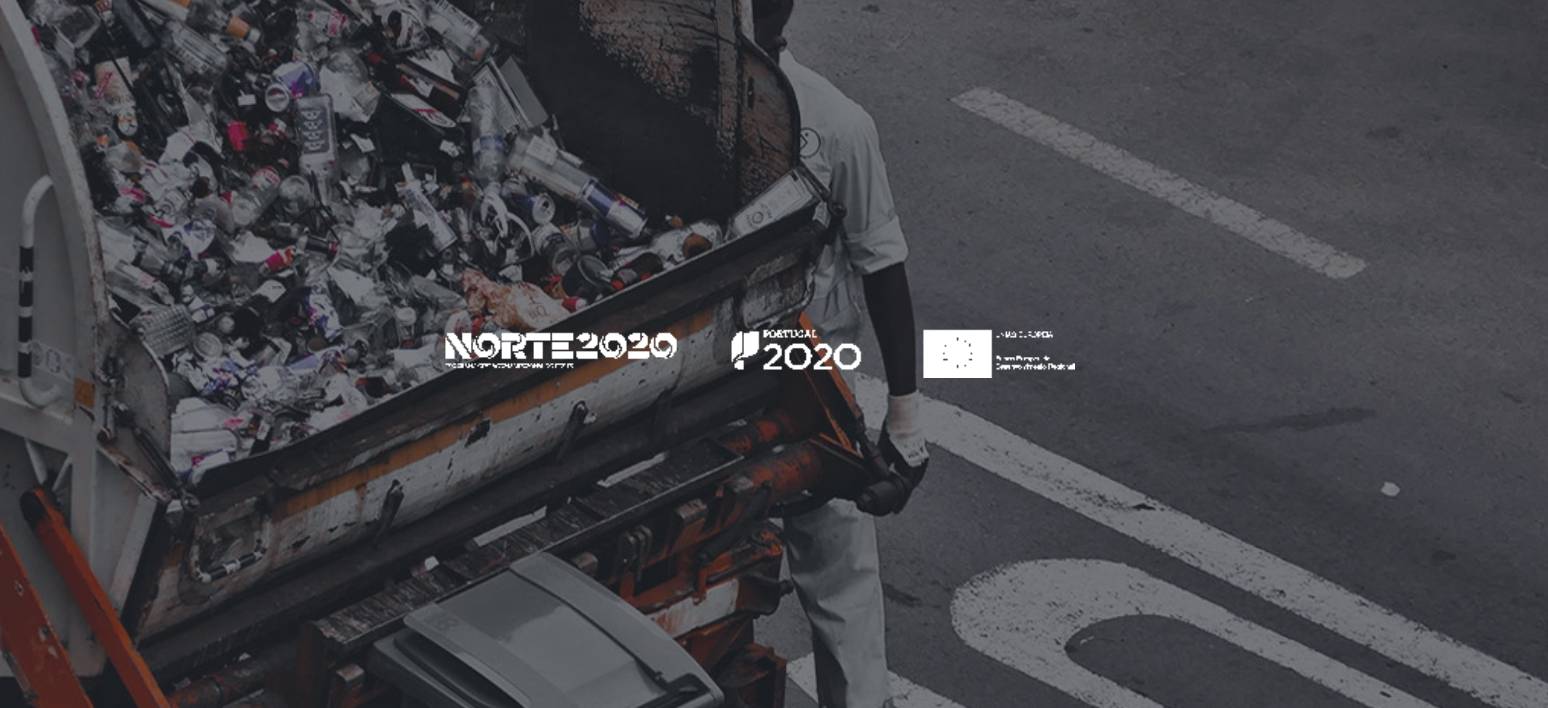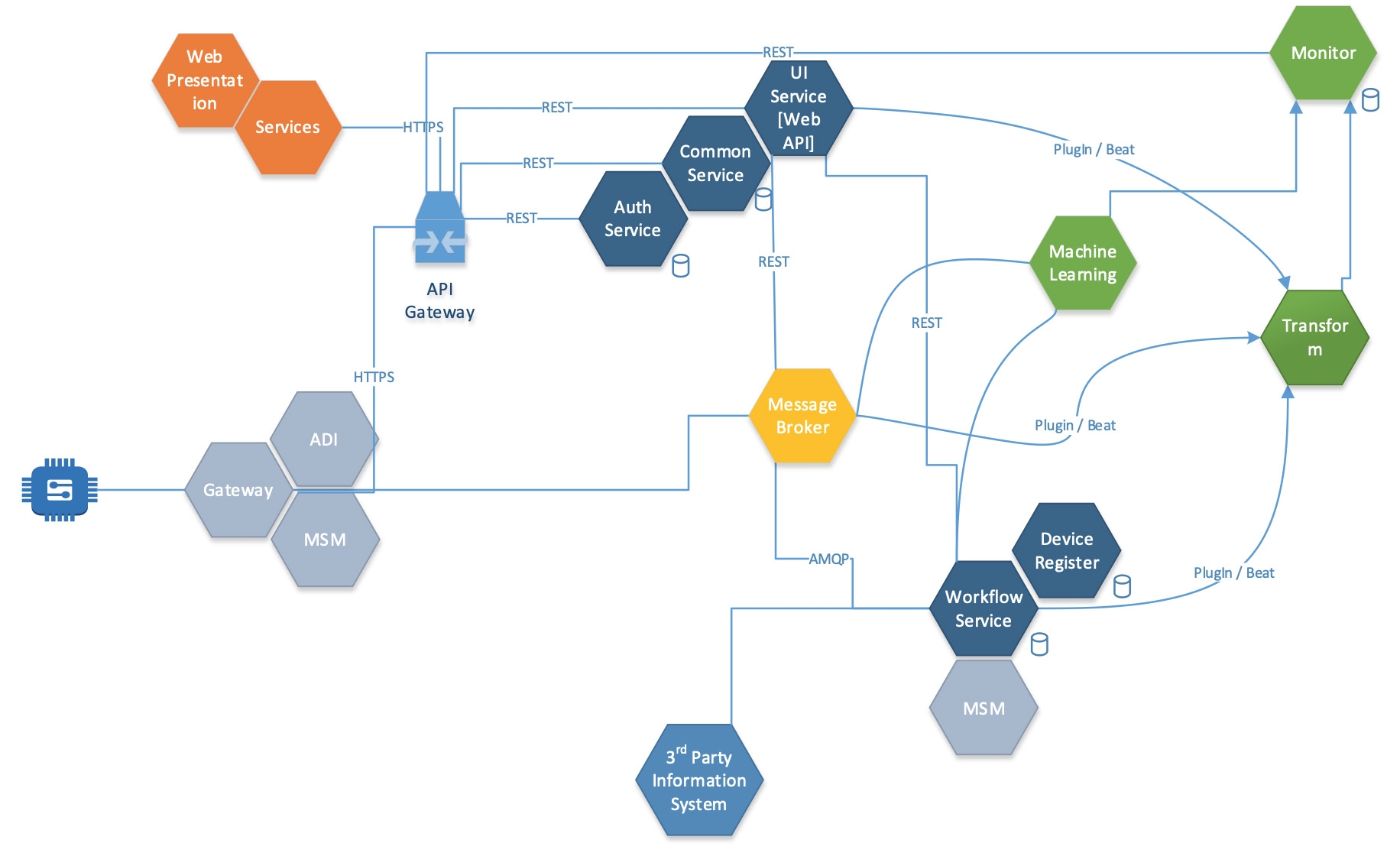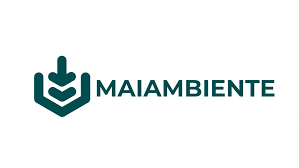Project Description
iW2C 4 PAYT Project
Implementation project of Pay As You Throw in urban solid waste, simultaneously working on the vectors of individual waste measurement and accounting, and promoting administrative modernization.
Project Name: IW2C 4 PAYT
Project Code: NORTE-01-0247-FEDER-045381
Main Goal: Strengthening the competitiveness of SMEs
Region of intervention: North
Beneficiary entity: Ubiquity Technology, Lda.
The present project aimed primarily to define a practical solution to the implementation of Pay As You Throw in urban solid waste, simultaneously addressing the vectors of individual waste measurement and accounting, and promoting administrative modernization.
The solution can be applied broadly to all environments where there is individual door-to-door collection, a situation that represents a growing trend internationally. It will leverage technical resources currently being introduced in the market to implement a disruptive solution through innovative methods, capable of addressing limitations identified in previous-generation systems.
Waste production is an inevitable consequence of life. The first record of a debris collection policy in the Western world dates back to the 5th century BC, in Athens, with the explicit creation of the first public landfill. However, the creation of landfills represented a transitional stage in the evolution towards increasingly structured policies addressing the collection and treatment of waste. In 1388, the English Parliament banned the disposal of refuse into watercourses, as the volume of deposits had already become so high that it was affecting their flow. Similarly, around the same time, the French government decreed a law requiring that all citizens who brought any load into the city must also transport an equal amount of waste collected within the city out of it.
What was not a problem in the Middle Ages quickly became a matter of utmost importance. Exacerbated by the Industrial Revolution, which intensified the formation of much denser population centers, the problem became significant, and populations began to feel the effects of inefficient policies that adopted solutions such as indiscriminate landfilling in arbitrary locations, giving rise to movements like NIMBY – Not In My BackYard. The scope of waste collection and treatment had already transcended local limits and had gained global political power.
Currently, with the increase in the world population, the issue of urban solid waste treatment tends to escalate. According to World Bank data from 2016, the largest cities on the planet generated 2.01 billion metric tons of solid waste, averaging 0.74 kilograms per person per day. With the rapid increase in population and population density in urban clusters, it is expected that the total amount will increase by 70% by 2050, reaching a total of 3.40 billion metric tons. This phenomenon is concerning in all environments and extensively analyzed by entities such as the World Health Organization (WHO).
In less developed countries where there are no policies and resources for proper waste treatment, it is assumed that the risk of diseases and subsequent epidemics is high. According to the organization CleanLeap, in Kenya, urban waste is responsible for various structural and public health phenomena. Uncollected waste causes blockages in sanitation networks, promoting the spread of infectious diseases such as Typhoid Fever, Cholera, and Malaria. The attempt to eliminate some waste through open-air incineration results in the dispersion of harmful elements into the atmosphere. Additionally, although less obvious, there are phenomena such as the apparent correlation between waste and urban violence, as described by the World Bank as well.
In industrialized countries, various challenges have also necessitated the need for rational resource management, ensuring both health and safety. For example, when hospital waste started to be recognized as potential sources of infections, incineration was adopted for its disposal. The same method – incineration – was widely used in the Americas for waste destruction, with estimates indicating that at the beginning of the 20th century there were approximately 300 incinerators in operation, which have since been deactivated due to their high maintenance costs and the air pollution they generated. Countries like China reveal other aspects of the same problem. In December 2015, for example, 69 people died and 8 went missing after being buried under debris. However, the material slide that caused the accident was not due to rains or avalanches, but the collapse of a pile of construction waste accumulated arbitrarily. These wastes, while not causing microbial infections like in previous cases, contain highly polluting and potentially carcinogenic materials.
When considering all types of waste, it is estimated that between 3 and 3.5 billion people in China are involved in the informal collection and treatment of waste, often without safety or health concerns. Consequently, although specific data on the phenomenon are not documented, prevalent diseases among these informal workers are reported to include Cholera and Hepatitis B, as well as certain types of cancer.
The organized collection and treatment of urban waste as a coordinated activity were first observed in the 18th century, when the first municipal waste collection service was established in Philadelphia. From this moment onward, an institution responsible for waste collection and treatment was institutionalized, meaning objectively that:
-
It had been recognized that the collection and treatment of urban waste were necessary for the safety and health of populations.
-
Waste collection and treatment became an activity in itself, involving planning, management, and implementation resources.
-
Consequently, waste collection and treatment required human and material resources, resulting in costs for both the government and citizens.
However, the cost associated with waste collection and treatment can become unsustainable, particularly in scenarios where per capita waste generation is high and population density increases per unit area. In certain countries, such as the aforementioned case of Kenya, urban waste collection and treatment is considered unaffordable, as it may require 30 to 50% of the national revenue to be implemented. Due to its unaffordability, it has degenerated into a growing and serious problem, to the extent that in Nairobi, it is estimated that only 25% of the 3,000 tons of waste generated daily are collected, leaving 50% of the population unserved. As a result, residents resort to illegal dumping and indiscriminate burning. In areas of the city where there is a higher economic status among the population, private waste collection companies operate, but these services are not universal.
In the Portuguese case, according to data from the INE (National Statistics Institute), the costs associated with the management of urban solid waste (RSU) increased from 8.94 Euros per ton in 2010 to a final value of 71.73 Euros per ton by 2014. In mainland Portugal, in 2014 alone, this amount represents a total expenditure of nearly 321 million Euros for treatment by managing entities, plus an additional average annual cost of 454 million Euros for collection and transportation.
Considering all the aspects mentioned above, it is easily concluded that the collection and treatment of urban solid waste is vital, but at the same time, it represents costs that can be unsustainable. Effective responses are thus required to maintain both hygiene and the environment, but also efficient ones that generate a sustainable financial impact. The proposed solution described in this document aims to specifically address the collection and measurement of waste, individually and effectively, in conjunction with efficient administrative processing to comprehensively address the problem.
The current general waste regime is governed by Decree-Law No. 178/2006 [7], of September 5, extensively amended by Decree-Law No. 73/2011 [8], of June 17, which republished it, with activities regulated by ERSAR.
Two types of entities intervene in the two phases of the collection and treatment process: “lower” entities – which collect waste, and “higher” entities – which, receiving waste collected “lower”, give it appropriate treatment: landfill, incineration, recycling, valorization. Appropriate treatment, in turn, depends on the type of waste.
Ordinance 209/2004, of March 3, approves the European waste classification table, dividing them into 20 major categories. For treatment purposes, however, 5 types of municipal solid waste can be considered:
-
Paper and cardboard;
-
Metal and plastic packaging;
-
Glass packaging;
-
Organic waste;
-
Undifferentiated waste.
Waste types 1 to 3 are recyclable. Type 4 undergoes organic valorization, for example, for fertilizer production. Type 5, on the other hand, without value, is subject to elimination via incineration (with potential energy production) or landfill disposal. In practice, this separation means that while waste types 1 to 4 represent a value that can be used to recover collection, processing, and all associated logistics costs, type 5 waste implies additional costs for municipalities.
The process of eliminating MSW has associated costs of two main types:
-
Collection: costs related to the acquisition, maintenance, and use of vehicles and human resources involved;
-
Treatment: costs related to the treatment operations by “higher” entities of the collected waste, usually resulting in payments for undifferentiated waste deliveries. The delivery of valuable waste may or may not be subject to bonuses.
Currently, the vast majority of municipalities in the country (but not only) pass on this cost indirectly to the waste-producing citizen through payment of a fee applied to the volume of water consumed.
It is accepted that there is a correlation (although not perfect) between water consumption, household size, and waste production. However, this assumption is not generalizable. For example, a commercial establishment can produce large quantities of packaging waste without consuming water, while a hair salon can consume a lot of water without producing a significant amount of municipal solid waste. Similarly, different types of households can produce different amounts of waste depending on their practices, thus missing an opportunity for rationalization not only in collection but also in waste production.
Thus, covering simultaneously the areas of social justice, behavior rationalization, and environmental education, the application of the polluter-pays principle has increasingly been a topic of research in the case of MSW, aiming to impose on the citizen a cost directly related to effective waste production and not an inference through indirect water consumption. This theme, moreover, due to its importance on the international spectrum, has given rise to the concept of PAYT (Pay As You Throw) and has become a central theme in conferences on environment and sustainability. For example, the conference “Kiel 2019: A milestone for Zero Waste Cities”, promoted by “Zero Waste Europe” and held last March in Germany, defines its program as “It will cover overall Zero Waste strategies and waste prevention with families as well as decentralized composting, PAYT (Pay As You Throw), and reuse systems at the municipal level.”
All research and debate around the theme arise, however, because its practical application poses numerous technical and operational challenges.
The present project aims to develop a response capable of overcoming the known limitations to date, which we will detail further ahead. As a fundamental principle, it aims to provide the implementation of PAYT in a real way, where each household will be taxed based on the actual amount of waste it has generated, feeding an efficient administrative structure where operational costs are reduced. In this premise, the project will encourage waste reduction, promote tax fairness, and enhance the health of entities responsible for collecting and treating MSW.
The complete structure of the proposed solution consists of three essential components:
-
System for measuring collected waste;
-
Collection infrastructure and integration of information;
-
Management infrastructure for collection activity, with optimization tools and decision support.
The system as a whole will ensure, in an innovative way:
-
Individual record of the type and quantity of waste;
-
Direct association of the waste level to the emitter;
-
Detailed recording of information, directly supporting the needs for implementing a real PAYT system;
-
Promotion of administrative efficiency and effectiveness, allowing for increased quality and reduced costs overall.
The communication and information integration infrastructure will be simplified in this project, functioning in storage and block communication. However, it will be implemented through functionality abstraction mechanisms, allowing its adaptation to different usage formats. Specifically, communication can in the future operate over a 3G, 4G, Nb-IoT, or similar connection, transferring data synchronously, or accumulating information to transfer later according to different means and criteria. On the integration side, the solution will know how to handle different situations, making adaptations, aggregations, validations, and corrections of any errors for a uniform and reliable result. This characteristic will allow the system to maintain the basic adaptation principle to existing systems, without the need for disruption and waste of investment.
Overall, all development will be guided by the creation of a commercially viable product, assuming the following strategic principles as pillars for its effective implementation:
-
Minimal intrusion into the current processes of entities responsible for waste collection and treatment;
-
Implementation cost compatible with a quick return on investment;
-
Minimal technical intrusion, reducing the scope of technical interventions in equipment, namely collection vehicles, ideally reducing their downtime to zero for the introduction of new technical functionalities;
-
General complexity minimization, avoiding action in scattered environments like collection containers;
-
Maximum support for administrative activity, reducing errors and promoting overall efficiency and effectiveness;
-
Maximum support for management activity, providing activity indicators and supporting future needs sizing.
The problem and the solution presented here focus on the Portuguese context. However, this does not mean that the solution is limited in scope. On the contrary, it is applicable to international contexts where individual door-to-door collection is practiced.
According to ERSAR data, there are 2368 heavy vehicles in the country for collecting urban solid waste, belonging to 278 public or equivalent entities, including municipal councils, municipal associations, and municipal companies. Additionally, private companies operate in this sector, either in their name or subcontracted by public entities. There are still private companies dedicated to this business, acting on their own behalf or as subcontractors for public entities.
Each vehicle collects waste that can be deposited by residents using three types of bins or containers:
-
Public road equipment (recycling points, “Moloks”) and large capacity containers (800, 1100 liters) for periodic collection (fixed or mobile) and general use;
-
Collective equipment of medium to large capacity for apartment buildings, using larger capacity containers of 240 to 800 liters;
-
Private equipment in single or multi-family houses, using small capacity containers, typically 140 liters.
In the first two cases, where there are no “individual” containers, identifying the waste producer is not a straightforward process, requiring solutions to control access to the containers, such as using RFID cards that open the container and identify the depositor.
In the third case, since the containers are for “individual” use, it is possible to clearly identify the responsible producer for each deposition.
The collection of Municipal Solid Waste (MSW) containers is carried out with heavy vehicles that, through mechanical means (lifts), tip the containers, emptying their contents into the truck. For small containers, which fall within the scope of the proposed system, previous approaches based on weighing exist, often through systems included in the vehicle structure, responsible for incremental measurement using weighing sensors placed between the box and the vehicle body. Such solutions do not allow for an accurate verification of the weight of waste collected in each tipping operation – the scales used, as they support weights in the order of tons (up to ten tons), do not have sufficient precision for small loads. These systems have typical tolerances of plus or minus 10 kg, making it inconvenient to measure the weight of lighter containers. For 140-liter paper/cardboard containers and packaging, whose specific waste weights, uncompressed, range from 80 to 120 kg per m³, the waste weight would be around 10 to 15 kg if completely full.
The alternative is the instantaneous measurement using systems that only weigh the container placed in them. However, traditional scales require a static and stable environment for an accurate reading. As their precision increases to meet reading needs, they become more vulnerable to noise, such as the truck’s own vibration or the way the container is handled. A stabilization period is generally required after placing the container on the support to verify its weight. However, this stabilization period can significantly impact the final system’s performance – a two-second difference in the collection time of an individual container represents over an hour of extra work in collecting 2,000 containers. This project aims to overcome the described problems by applying techniques such as artificial intelligence.
In conclusion, there is no technical solution in the market that supports the implementation of PAYT in the common context of individual container collection, while simultaneously ensuring the requirements of:
-
Individual registration of the amount of waste collected, its type, and respective producer at each collection;
-
Low acquisition cost relative to other solutions;
-
Minimization of negative impact on the operation;
-
Simple maintenance without the need for frequent calibrations.
For the present project, robustness, scalability, flexibility, and extensibility are essential requirements for respecting the commercial strategy, with the architecture reflecting this orientation. In a real context, the solution for this project will have to deal simultaneously with two types of requirements:
-
The challenges of determining weight by implementing a prototype capable of validating the concept.
-
Validating an architecture capable of evolving into a commercial-grade product.
To meet the outlined goals, a monolithic approach was deemed inadequate, as the rigidity of such a solution could negate the flexibility, extensibility, and scalability requirements in subsequent phases.
Instead, a microservices-based architecture was chosen.
The microservices architecture approach ensures several important requirements:
-
True separation of responsibilities – Implementation must be divided from the start into small services with a clear definition of responsibilities for each service. This will result in a genuinely modular approach and simplifying future solution evolutions;
-
High cohesion but flexible coupling – The system’s flexibility to evolve will depend on the ability to reorganize, change, or expand the ecosystem. The microservices approach excels in this area, providing a construction paradigm with blocks that can be swapped;
-
Each microservice will implement a hexagonal architecture pattern, promoting future code maintenance.
The overall strategy of the solution can be summarized as follows:
-
At the core of IW2C 4 PAYT is a microservice architecture based on several services, with the Data Stream Engine and Workflow Service coordinating all the information. Other services, such as Machine Learning, are responsible for performing specific functions in processing information and producing results.
-
Each microservice is a mini-application with its own hexagonal architecture, consisting of business logic published through adapters. Some microservices will provide an API consumed by other microservices or solution clients. Other services may implement a user interface – web or mobile. Other microservices will trigger events in a Message Broker that will send appropriate messages to be consumed by other microservices.
-
The SPA – single-page application will be implemented using a JavaScript framework.
-
Interoperability will be achieved using the REST/JSON protocol over HTTPS for the user interface service API.
-
The API Gateway will be implemented using the Gateway Routing Pattern.
-
A central Message Broker will receive messages from various senders, determine the correct destination, and route the message to the appropriate channel.
-
User interface resources such as graphs, tables, forms, etc., will not be developed but will use third-party libraries like Bootstrap, ensuring compliance with licensing rules. The choice of libraries must ensure compliance with licensing rules.
The figure below illustrates the presented concepts in the context of the present project:
The planned analysis, specification, development, and documentation work has been completed.
Regarding data acquisition and training of neural networks for stable weighing, due to the delay in obtaining the robotic arm, an initial wooden structure was necessary to conduct the main tests. A prototype for testing and trials was built, and specific hardware capable of running neural networks was tested.
In the second phase, the robotic arm was used for additional simulation. Based on the samples acquired using the robotic arm, training sessions were created, leading to interesting results, although some artifacts whose origin was not yet identified were noted.
The support infrastructure for the system’s operation was also developed, implemented, and configured, particularly the back office and workflow management system, which are operational.
The BI system, along with a predictive model, was developed and implemented, enabling data exploration and obtaining forecasts intuitively and interactively, with the ability to delve into the detail of container tipping.
The results obtained were analyzed and presented, allowing us to conclude that the most ambitious goals of this project have been achieved.
Despite the constraints, mostly due to COVID-19, promising results were achieved with high improvement potential, either through the inclusion of more sensors or obtaining more training data to cover more container and vehicle types.
Real vs. verified weight,
with the application of artificial intelligence mechanisms
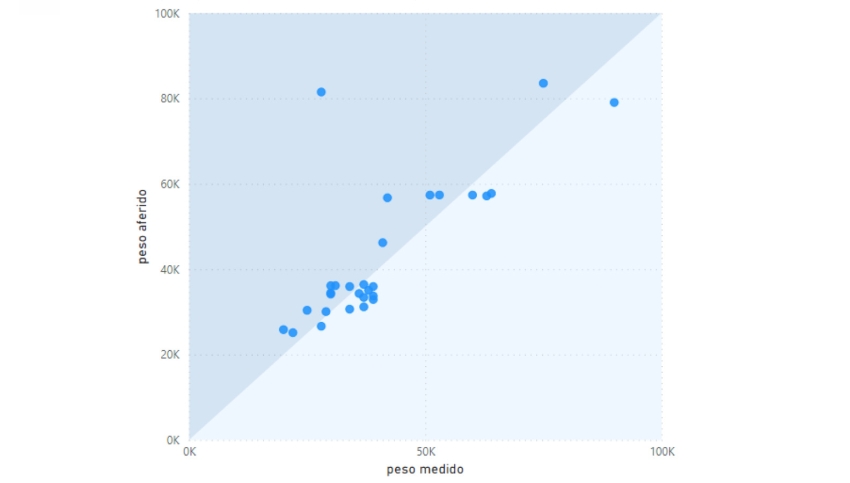
Data exploration interface
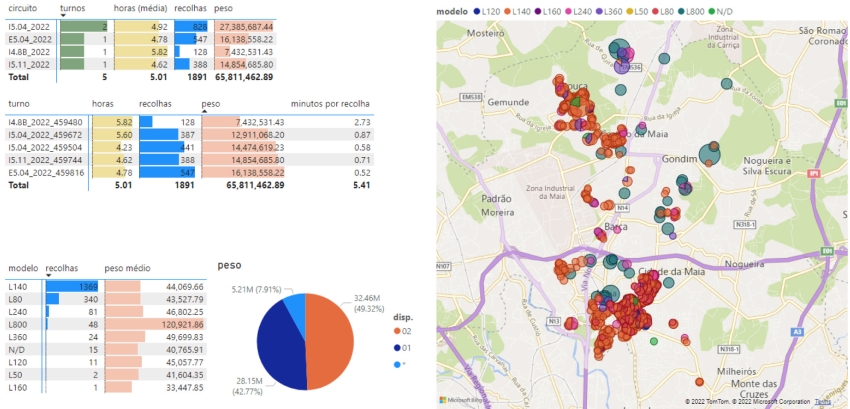
 Predictive models
Predictive models




